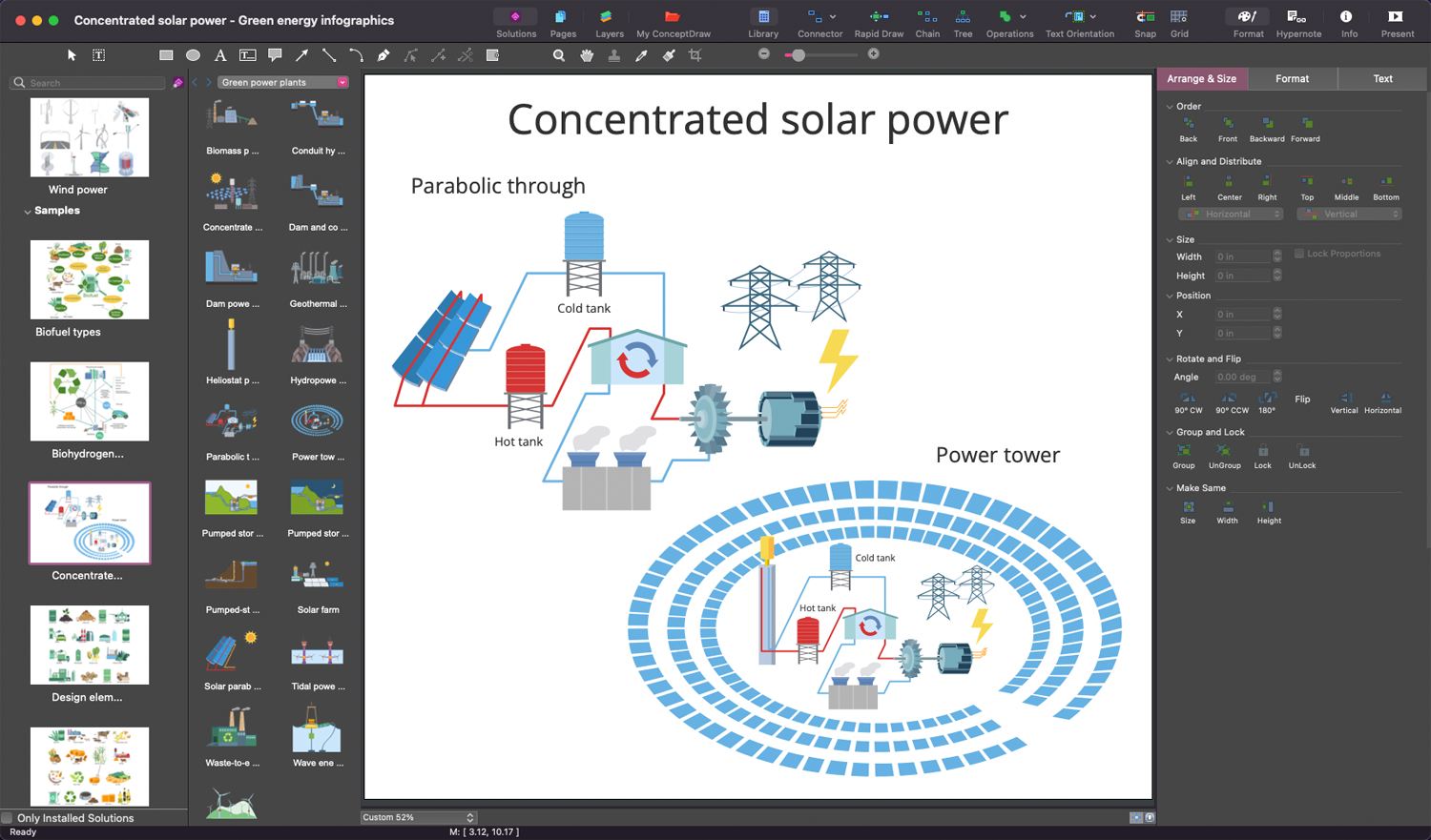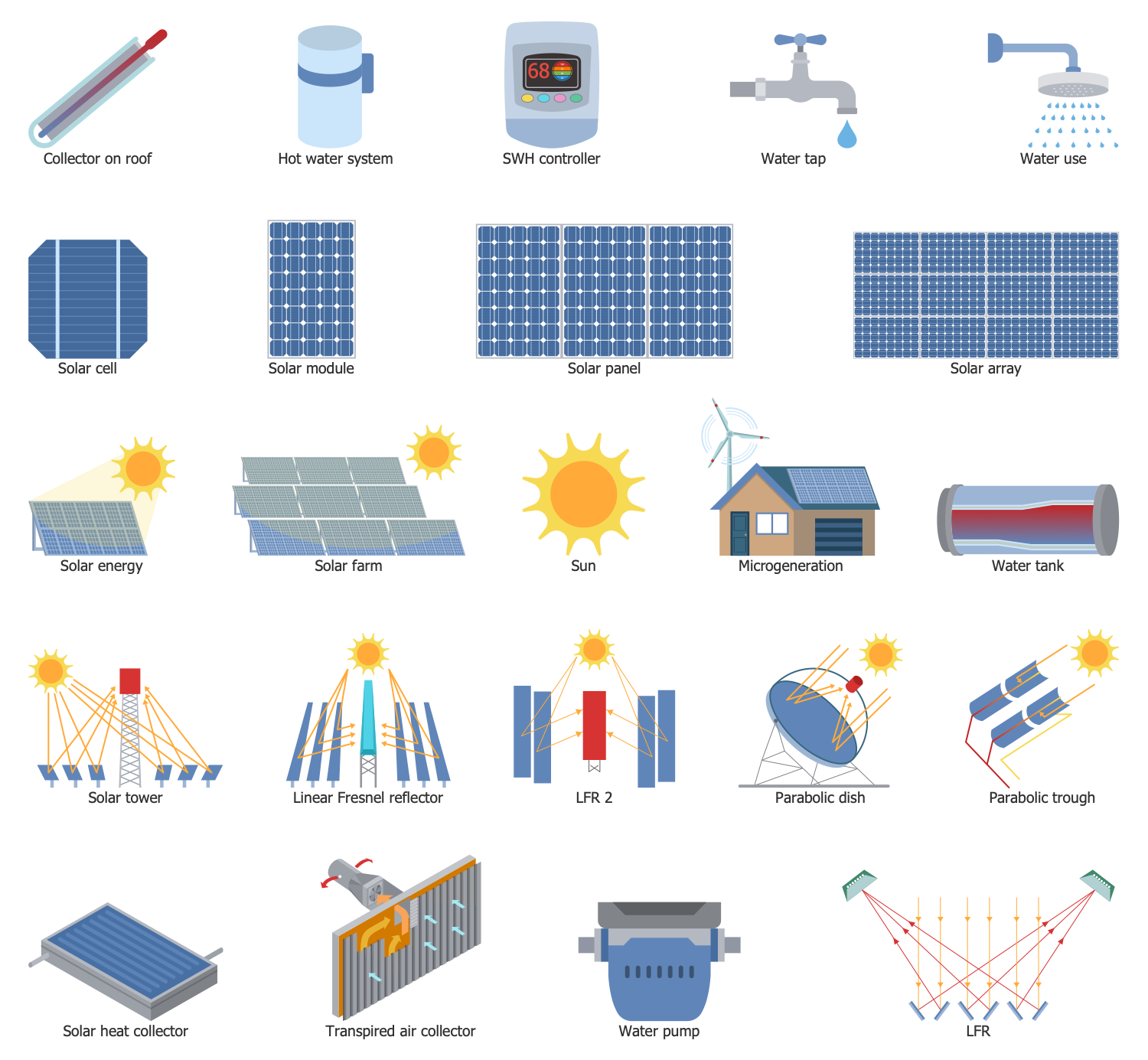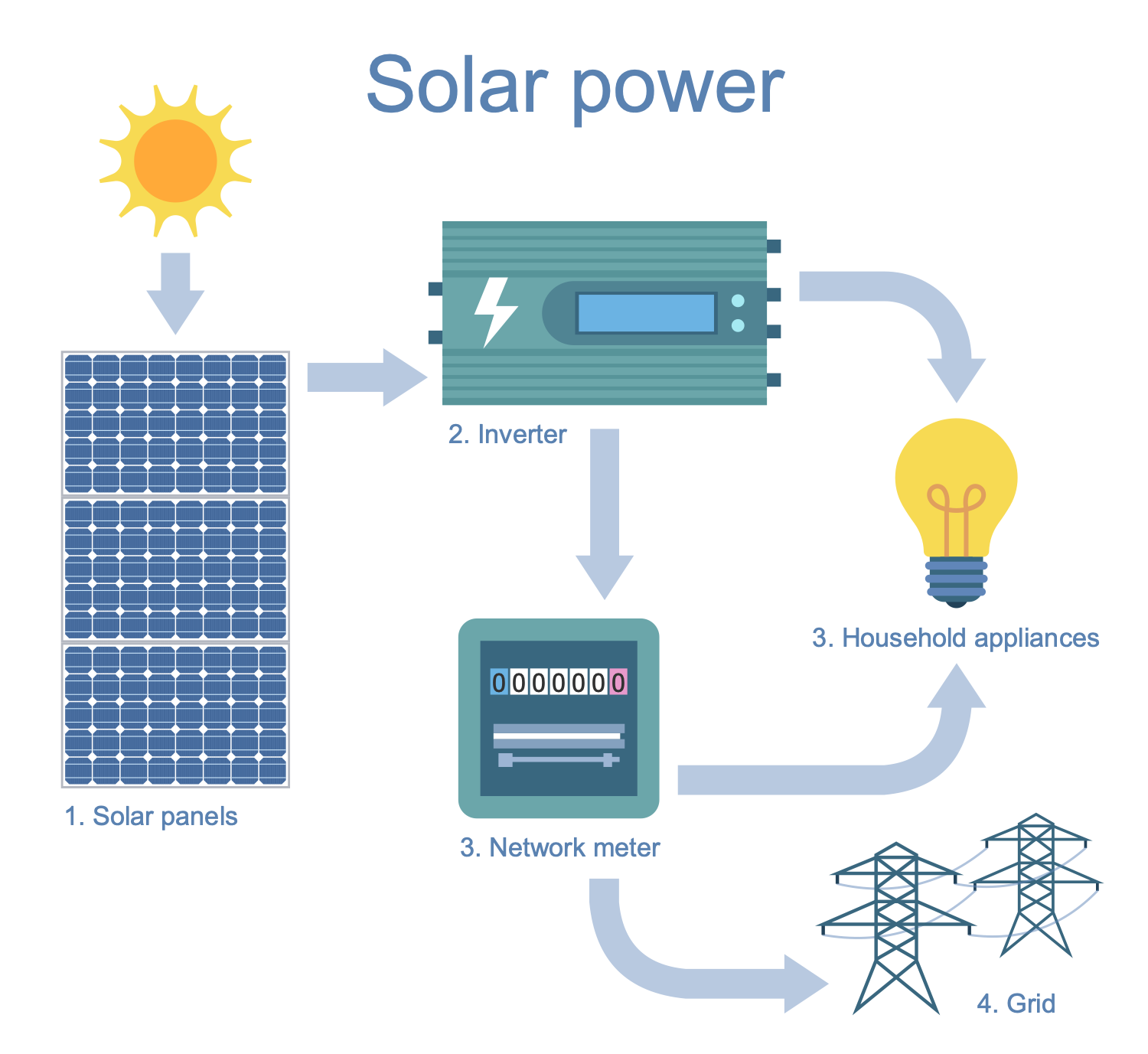Solar Power
Sun is a powerful source of energy and heat, which every day gives off energy needed to power everything on the Earth. Solar radiation or electromagnetic radiation is light emitted by the sun. The amount of sunlight that strikes the Earth's surface in an hour can cover the yearly needs for energy for the entire world.
Solar power is a power generation method that converts light and heat radiant from the sun into electricity. Currently, it is the major renewable and clean energy resource. Solar power is used in energy systems of any size, from small household installations to large-scale projects, when multiple solar panels arrays or large-scale solar farms are installed to power entire towns.
The global potential of solar energy greatly exceeds that of any other renewable energy resource. It is cost competitive and is used to heat, cool, and light buildings. The use of solar energy offers huge longer-term benefits. Solar power is a way to a clean energy future. It releases no harmful emissions, reduces pollution and mitigates climate change, increasing energy security and sustainability. It has low operating costs, contributes to a resilient electrical grid, generates backup power for nighttime and outages, and helps to reduce the cost of electricity. Moreover, solar energy development creates jobs, encourages economic growth, and allows reducing dependence on fossil fuel and import resources.
Solar technologies differ in the way they capture, convert, and distribute solar energy. They are passive or active. Passive technologies are based on using materials with good light-dispersing properties and favorable thermal properties. Active solar technologies are the most popular and convert sunlight into electricity using a wide range of technologies:
- concentrated solar power (CSP) technologies use lenses or mirrors to focus an area of sunlight in a hot spot;
- photovoltaics (PV) apply a photovoltaic effect to convert light into electrical direct current (DC);
- concentrator photovoltaics (CPV);
- solar heating;
- solar architecture;
- artificial photosynthesis, and more.
Solar panels come in various shapes and sizes. Each solar panel includes a layer of silicon cells, a metal frame, a glass casing surrounded by a film, and wiring. Solar cells have a simple design but are incredibly efficient. Each solar cell contains a thin semiconductor wafer made from two layers of silicon charged positively and negatively. The negatively charged layer forms an electric field.

Example 1. Solar Power Infographics
Photovoltaic components in solar panels become more efficient each year. Currently, photovoltaics contain ultra-efficient solar cells and are used as a source of electricity for both small and medium-sized applications and gigawatt-scale power stations. When the sun shines onto a solar panel, the PV cells absorb light energy, are charged by it and the electrons detach from atoms. The electrical direct current is formed by these loose electrons, which are set into motion by the electric field surrounding the semiconductor wafer. This DC electricity is then changed into AC electricity by an inverter to power various appliances in homes and enterprises.
Solar power is used for electricity generation and production of thermal energy for heating or cooling. Solar water heating systems collect the thermal energy of the sun and use it to heat water for various buildings. The systems include a solar collector, insulated piping, and a hot water storage tank, and are a cost-effective way to generate hot water. There are used active and passive solar water heating systems. Active systems use electric pumps to circulate water and have residential and commercial use. Passive solar water heating systems rely on thermodynamics, they are less expensive and less efficient.
The use of solar photovoltaic systems and CSPs grows, offers the highest efficiency, and has the most potential of any renewable technology. The captured energy is used to generate electricity or is stored in batteries or thermal storage.
In recent years the cost of solar panels fell significantly and now PV systems provide the cheapest source of electricity. In 2021, 4% of the world's electricity was solar energy. According to the forecasts, in coming decades solar energy becomes the world's largest source of electricity.
Example 2. Solar Power Library Design Elements
ConceptDraw DIAGRAM charting and vector drawing software extended with the Green Energy solution is helpful for drawing high-quality infographics, illustrations, and designs to show the advantages of green, renewable and sustainable resources, including solar power. This solution contains 14 libraries of vector design stencils, which make the drawing process easy and comfortable even for beginners.
Example 3. Solar Power
The Solar Power Infographics samples you see on this page were created in ConceptDraw DIAGRAM software using the drawing tools of the Green Energy Solution. These examples successfully demonstrate solution's capabilities and the professional results you can achieve using it. An experienced user spent 10-15 minutes creating each of these samples.
Use the powerful tools of the Green Energy solution to design your own Green Energy Infographics quick, easy and effective.
All source documents are vector graphic documents. They are available for reviewing, modifying, or converting to a variety of formats (PDF file, MS PowerPoint, MS Visio, and many other graphic formats) from the ConceptDraw STORE. The Green Energy Solution is available for ConceptDraw DIAGRAM users.

